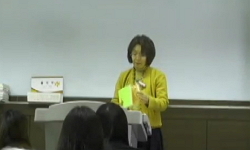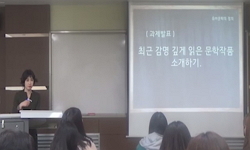The picturebooks of the 1920s and 1930s in Russia became a multi-layered polyphony of art forms-adult and child, female and male, drawing and writing-as the participation of avant-garde artists in publication. The Oberiu poets had no choice but to par...
http://chineseinput.net/에서 pinyin(병음)방식으로 중국어를 변환할 수 있습니다.
변환된 중국어를 복사하여 사용하시면 됩니다.
- 中文 을 입력하시려면 zhongwen을 입력하시고 space를누르시면됩니다.
- 北京 을 입력하시려면 beijing을 입력하시고 space를 누르시면 됩니다.

오베리우 시인과 여성 화가 베라 예르몰라예바의 그림책에 나타나는 다층적 서사(2) - 베덴스키의 『어부들』과 자볼로츠키의 『좋은 장화』를 중심으로 - = A Multi-layered Narrative in the Picturebooks by the OBERIU Poets and Vera Ermolaeva(2) - Focused on Fishermen by Aleksander Vvedensky and Good Boots by Nikolai Zabolotsky -
한글로보기부가정보
다국어 초록 (Multilingual Abstract)
Vera Ermolaeva had drawed an illustration in Vvedensky’s The Fishermen and Zabolotsky’s The Good Boots. These outstanding picturebooks were written and illustrated by a author and a illustrator with the equal contribution. In other words, the reader has a narrative that can be completed with the combination of the words and the illustration. Ermolaeva reflects the artistic style of her time in The Fishermen and The Good Boots. The combination of the illustrated narrative by Ermolaeva and the written narrative of Vvedensky and Zabolotsky could create new narrative meaningful to the reader. Also, these books are the showcase of the avant-garde experiments and ideas ahead of their time by both poets and artists.
The picturebooks of the 1920s and 1930s in Russia became a multi-layered polyphony of art forms-adult and child, female and male, drawing and writing-as the participation of avant-garde artists in publication. The Oberiu poets had no choice but to participate in children’s literature to make a living under the surveillance of Soviet government. Ermolaeva, a central figure in the avant-garde art of the 1920s and 1930s in Russia, had corroborated with the Oberiu poets for making the outstanding picturebooks artistically recognized today. She was a member of the Youth League including Malevich, Matyushin, Filonov, Tatlin and promoted Suprematism with Malevich.
Vera Ermolaeva had drawed an illustration in Vvedensky’s The Fishermen and Zabolotsky’s The Good Boots. These outstanding picturebooks were written and illustrated by a author and a illustrator with the equal contribution. In other words, the reader has a narrative that can be completed with the combination of the words and the illustration. Ermolaeva reflects the artistic style of her time in The Fishermen and The Good Boots. The combination of the illustrated narrative by Ermolaeva and the written narrative of Vvedensky and Zabolotsky could create new narrative meaningful to the reader. Also, these books are the showcase of the avant-garde experiments and ideas ahead of their time by both poets and artists.
동일학술지(권/호) 다른 논문
-
크림반도 병합 이후 카자흐스탄의 무역구조 변화 - 외부충격의 영향을 중심으로 -
- 한국외국어대학교 러시아연구소
- 염동호 ( Dong-ho Yeom )
- 2024
- KCI등재
-
- 한국외국어대학교 러시아연구소
- 홍상우 ( Hong Sangwoo )
- 2024
- KCI등재
-
환유의 다중 해석 기능 연구 - 한·러 정치담화문을 중심으로 -
- 한국외국어대학교 러시아연구소
- 마새봄 ( Saebom Ma )
- 2024
- KCI등재
-
벨르이의 «페테르부르크»와 도스토예프스키의 «죄와 벌»에 나타난 상호텍스트성과 상호주관성의 관계 연구 - 벨르이의 소설 «페테르부르크»의 예시를 중심으로 -
- 한국외국어대학교(글로벌캠퍼스) 러시아연구소
- 홍기순
- 2024
- KCI등재




 KCI
KCI KISS
KISS






